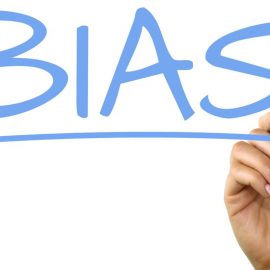

This article is an excerpt from the Shortform book guide to "The Personal MBA" by Josh Kaufman. Shortform has the world's best summaries and analyses of books you should be reading.
Like this article? Sign up for a free trial here .
How do you determine the optimal price for your product/service? What are some things you should take into account when pricing your offer?
Your price can make or break the profitability of your business. The best price point is one that strikes a balance between reflecting the value of your product and allowing for a profit.
Here are some tips on how to price your product or service.
How to Price Your Offer
When pricing offers, businesses need to strike a balance between providing a fair price to customers and making a profit. Kaufman explains how to price your product by making some simple calculations:
Manufacturing cost + profit: Work out how much your offer costs to produce and add on how much profit you want to make per sale. For example, your product costs $20 to create and you want to make a 10 percent profit for every sale so you set the price as $22 ($20 + 10%).
Comparative pricing: Work out the average price that offers similar to yours are selling for and set your price accordingly. Setting a lower than average price attracts more customers but it may also signal that your product or service doesn’t offer as many benefits as what’s currently on the market. Alternatively, setting a higher than average price signals that you’re offering something superior to what’s currently on the market. This approach attracts fewer customers but results in more profit per sale.
Price based on long-term value: If you’re selling an asset that will produce ongoing income for your purchaser, set the price according to how much you expect this asset to earn over a set period of time. For example, you’re selling a franchise and expect it to earn $3,000 a month over a period of 10 years. You set your asking price for $360,000 ($3,000 x 12 months x 10 years).
Price based on subjective value: People value products and services in different ways depending on their specific requirements and how beneficial the offer appears to be—the more an offer appears to meet their specific needs, the more people are willing to pay. Determining how much your offer is worth to the people who value it the most will allow you to set higher prices. For example, a seasoned marathon runner will value high-grade running shoes more than someone who only goes for occasional runs.
| Other Factors to Consider Before Pricing Your Offer According to Osterwalder and Pigneur (Business Model Generation), before applying one of Kaufman’s four pricing methods, you first need to consider two important factors that will have a massive impact on your profit structure: What type of transactions you’ll apply and whether you’ll offer fixed or variable prices. They explain that there are two ways to make a profit: single transactions (selling a house) and subscriptions (leasing a house). You can apply both profit sources in the same business—for example, earning an income from renting and selling properties. If you decide to focus on single transactions, you’ll want to set a high price to maximize your profits—because you won’t know when you’ll make your next sale. If you decide to focus on subscriptions, you’ll want to set a lower price to attract more subscribers—because this will help build your customer base and provide a regular source of income. If you choose to apply both profit sources to the same business, you’ll have more flexibility in setting your prices—because regular income from your subscriptions will make up for lower profits on your single transactions. Next, you’ll need to decide if you’re setting fixed or variable prices for your products and services—for example, setting a universal rental rate or charging extra for tenants with additional demands such as pets or extra storage space. You can apply any one of Kaufman’s four methods if you choose to set fixed prices in combination with single transactions or subscriptions. If you choose to build variations into your pricing structure, you’ll need to determine the subjective value of your offer to set your prices. |

———End of Preview———
Like what you just read? Read the rest of the world's best book summary and analysis of Josh Kaufman's "The Personal MBA" at Shortform .
Here's what you'll find in our full The Personal MBA summary :
- A comprehensive overview of how businesses work
- The five key processes that underpin every business
- How to identify profitable opportunities to ensure business success






